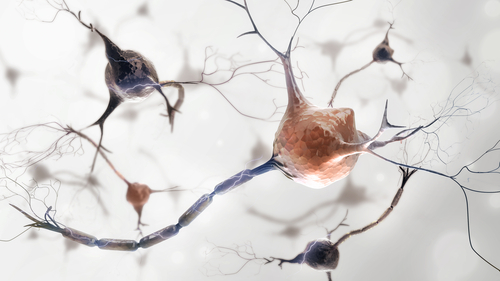Mutations in FUS Gene Affects Growth and Workings of Motor Neuron Axons, Study Shows

Mutations in the FUS gene, one of the most common causes of familial amyotrophic lateral sclerosis (ALS), increase the number of branches extending from the axons of motor nerve cells, so that no clear path exists for these neuronal “arms” to transmit information — in the form of electrical impulses — to muscle cells, and they eventually shrivel and die, a new study shows.
This abnormal growth of axonal branches is mediated by higher levels of the Fos-B gene, the target of FUS.
The study “Aberrant axon branching via Fos-B dysregulation in FUS-ALS motor neurons” was published in the journal EBioMedicine.
ALS is characterized by the loss of motor neurons, the specialized nerve cells that control muscle function. Motor neurons use their axons — the long, slender projections of a nerve cell – to send electrical signals from the central nervous system (brain and spinal cord) to muscle fibers. In ALS patients, axons are abnormal and start to shrink even before the first motor symptoms begin to appear.
However, the mechanisms underlying axonal degeneration in motor neurons of ALS patients aren’t fully understood.
Join our ALS forums: an online community especially for patients with Amyotrophic Lateral Sclerosis.
Mutations in more than 25 genes have been identified as a cause of familial ALS, with the FUS gene being one of the most commonly mutated (about 5% of all cases). The FUS protein is located predominantly in the nucleus of healthy cells, but is found in axons in ALS patients.
“[A]mong all the causative genes of ALS, one gene, called FUS, was confirmed to locate at axon ends,” Masashi Aoki, professor at Tohoku University Graduate School of Medicine in Japan and the study’s lead author, said in a press release.
Researchers used skin cells from a 43-year old patient with familial ALS to produce a line of induced pluripotent stem cells (iPSCs) — cells able to generate almost any type of cell in the body. They used the iPSCs to generate motor neurons, and to compare their behavior when the FUS gene is mutated.
They found that the axons of motor neurons with a mutated FUS were abnormal, showing greater branching than control (non-mutated) nerve cells. This excess of branches meant that a message being conducted through axons is lost.
The mutation in the FUS gene was linked to unusual levels of several other genes, including Fos-B. Researchers found that Fos-B is the binding target of the FUS protein, and in the mutated FUS motor neurons, the activity of Fos-B was significantly higher, particularly in axons.
Using a molecular approach to lower Fos-B activity in FUS-mutant motor neurons, researchers were able to restore axonal branching to normal levels.
“Our in vitro [lab dish] results indicated that Fos-B regulates the abnormal axonal morphology in FUS-mutant MNs [motor neurons],” they wrote.
They also confirmed the role of Fos-B in axon branching using a zebrafish, an animal model with brain development similar to that of people. Increasing the levels of Fos-B induced greater branching of motor neuronal axons.
Analysis of spinal cord samples from a deceased familial ALS patient with a FUS gene mutation confirmed the abnormal increase in Fos-B.
Overall, these findings suggest “a promising target for which ALS-linked mutations cause axonal refraction and degeneration — one of the earliest events in the disease,” Aoki said.
This study was performed using immature motor neurons, and further research is required to assess the role of Fos-B in fully developed (mature) cells.
“We need more information to elucidate the relationship in mature motor neurons,”Aoki said.






